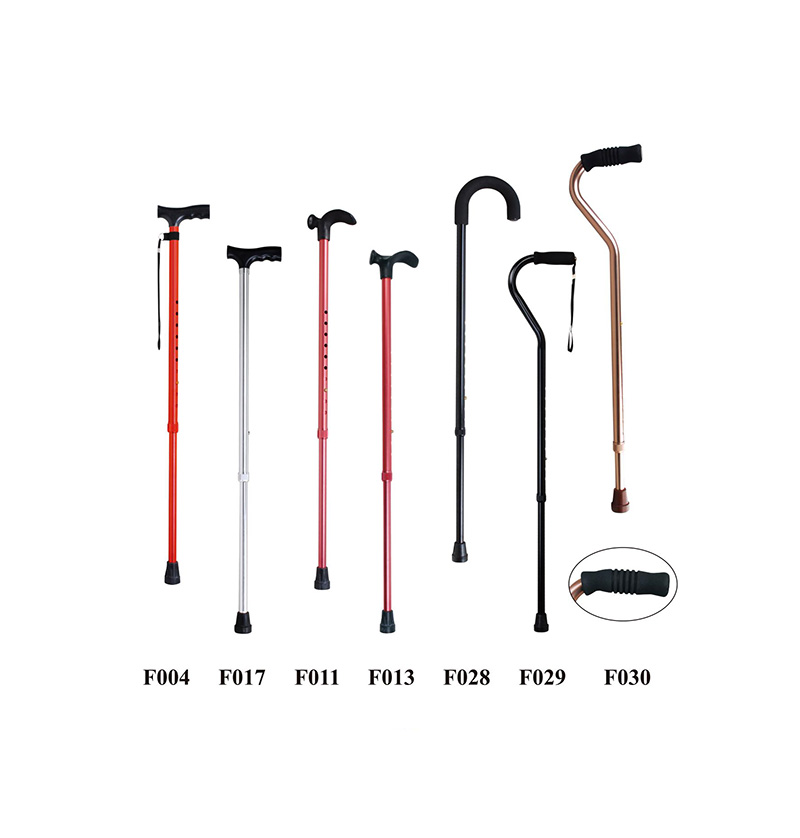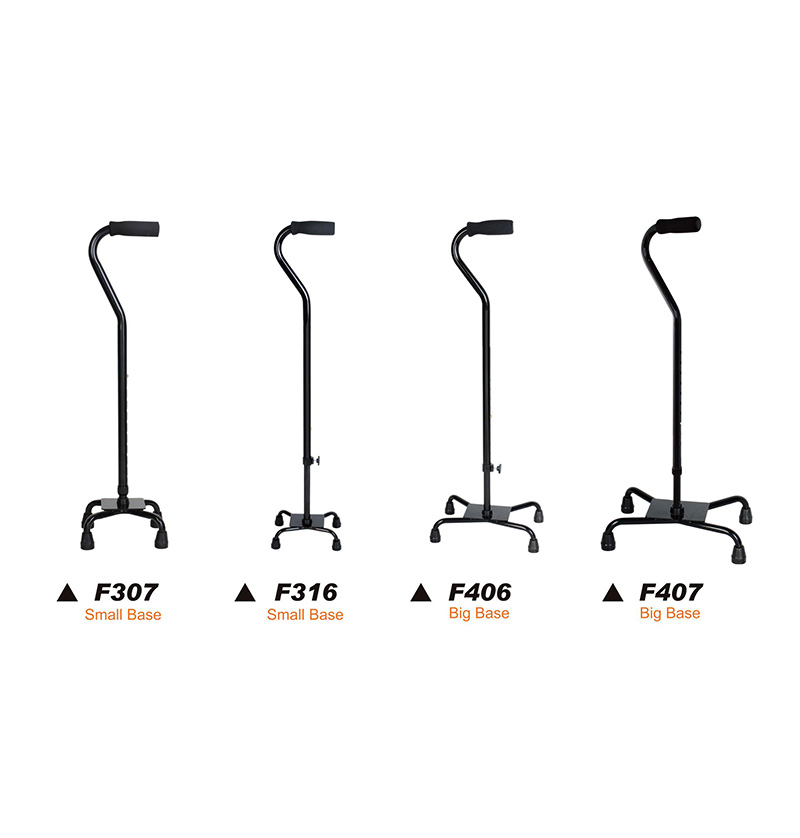How to use walking sticks properly
Update:15-07-2021
Summary:Canes and crutches are common walking aids in orthopedics and traumatology. Its main function is to reduce the weight of one or both lower limbs, ther...
Canes and crutches are common walking aids in orthopedics and traumatology. Its main function is to reduce the weight of one or both lower limbs, thereby reducing pain. The use of walking sticks and crutches should be placed on the side of a healthy limb. From a biomechanical point of view, holding the cane on the uninvolved side will shift the body's center of gravity to the uninvolved side, thereby reducing the pressure on the affected side; The situation on the affected side is even worse. For example, when the left side is injured and cannot bear all the weight, the crutches should be placed on the right, and the cane should be held with the right to shift the body's center of gravity to the right, so as to reduce the force on the left limb.
How to choose the right crutches?
1. Selection of crutches length: The following methods can be used to measure the length of adult crutches:
(1) Height -40 cm = length of crutches.
(2) The length from the armpit to the ground 20 cm outside the foot.
(3) Add 5 cm from the armpit to the sole of the foot.
(4) 77% of body height.
(5). Handle height selection: the distance from the armpit to the wrist.
How to choose the right crutches?
1. Selection of crutches length: The following methods can be used to measure the length of adult crutches:
(1) Height -40 cm = length of crutches.
(2) The length from the armpit to the ground 20 cm outside the foot.
(3) Add 5 cm from the armpit to the sole of the foot.
(4) 77% of body height.
(5). Handle height selection: the distance from the armpit to the wrist.

How to use crutches?
1. The use of crutches
When walking: The distance of one step forward with both crutches, about 25-30 cm, put the center of gravity on the crutches, and then move the affected limb one step closer to the middle of the crutches, and then the healthy limb moves forward. When the uninvolved limb is stable, move the center of gravity to the uninhibited limb. At the same time, we are ready to proceed to the next step.
When going up and down the stairs: hold the handrails with one hand, and hold the crutches with the other. When going upstairs, the healthy side limb is in front and the affected side is behind. Use the healthy side limb to drive the affected side upstairs. When going downstairs, the affected limb goes down first, and the healthy limb goes down later. In short, "good legs go up first, bad legs go down first."
2. The use of walking sticks
The cane should be placed on the side of the uninvolved limb. When walking, the cane first takes a small step forward, placing the center of gravity on the side of the uninvolved side, and then stepping out of the affected limb, and then out of the uninvolved limb. When walking, the body can be slightly tilted to the uninhibited limb to reduce the weight of the affected limb.










